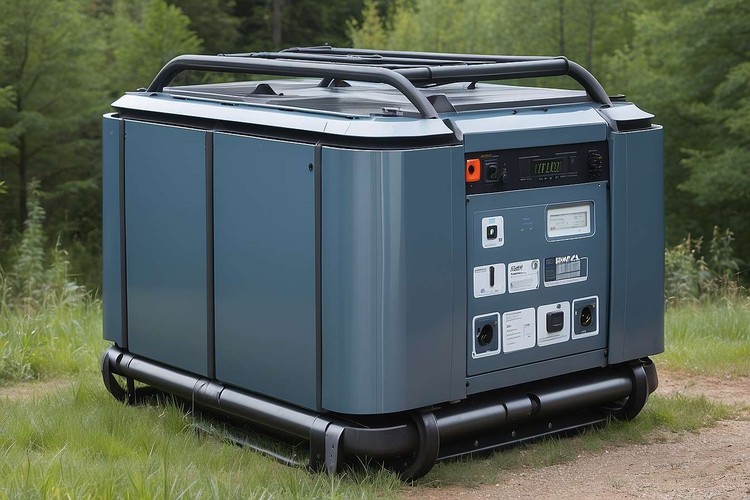Top Portable and Home Power Generators for Emergencies and Solar Use in the USA 2025: An In-Depth Guide
Unexpected outages can cut power to essential appliances and communications. This 2025 guide reviews portable and home generators across the USA—solar, fuel, and dual‑fuel options—covering key features, performance, and buying considerations to help you choose reliable emergency backup.

The generator market in 2025 offers unprecedented variety and technological advancement. From compact portable units perfect for camping trips to whole-house systems capable of powering entire homes, today’s generators provide reliable backup power solutions for virtually any situation. Solar generators have gained particular popularity, combining environmental consciousness with practical functionality.
Types of Generators for Emergencies and Travel Explained
Generators fall into several distinct categories, each designed for specific applications. Portable fuel generators typically run on gasoline, propane, or diesel, offering high power output and long runtime capabilities. These units excel in emergency situations where consistent, high-wattage power is essential for running appliances, medical equipment, or maintaining comfort during extended outages.
Solar generators represent the newest category, utilizing battery storage systems charged by solar panels. These units operate silently, produce zero emissions, and require minimal maintenance. While traditionally limited in power output, modern solar generators now offer substantial capacity suitable for powering essential home systems for several days.
Inverter generators provide a middle ground, producing clean, stable power safe for sensitive electronics while maintaining fuel efficiency. Standby generators, permanently installed outside homes, automatically activate during power outages and can power entire households indefinitely when connected to natural gas lines.
Essential Factors for Selecting a Generator in the 2025 USA Market
Selecting the appropriate generator requires careful consideration of power requirements, fuel availability, and intended use. Calculate your essential power needs by listing critical appliances and their wattage requirements. Refrigerators typically need 600-800 watts, while HVAC systems may require 3,000-5,000 watts or more.
Fuel type significantly impacts operational costs and convenience. Gasoline generators offer high power output but require fuel storage and regular maintenance. Propane units burn cleaner and store fuel indefinitely, making them ideal for emergency preparedness. Solar generators eliminate fuel costs entirely but depend on weather conditions and battery capacity.
Runtime considerations vary dramatically between generator types. Traditional fuel generators can operate continuously with regular refueling, while battery-powered solar units provide limited runtime based on stored capacity. Consider how long you might need backup power during typical outages in your area.
Top Portable Solar Generators in 2025
Solar generator technology has advanced rapidly, with lithium battery systems now offering impressive capacity and longevity. Leading models feature expandable battery banks, multiple charging options, and smart monitoring systems. These units typically range from 500-watt-hour compact models suitable for camping to 3,000+ watt-hour systems capable of powering homes for days.
Modern solar generators include multiple output options: standard AC outlets, USB ports, 12V connections, and high-power outlets for larger appliances. Many models support simultaneous solar and wall charging, reducing recharge times significantly. Advanced units feature smartphone apps for remote monitoring and control.
The latest solar generators incorporate fast-charging technology, with some models reaching 80% capacity in under two hours when connected to wall power. Solar panel compatibility has also improved, with many units supporting various panel configurations for optimal charging in different conditions.
Recommended Portable Fuel Generators for Home Backup and Travel
Traditional fuel generators remain popular for their high power output and extended runtime capabilities. Modern portable units feature improved fuel efficiency, reduced noise levels, and enhanced safety systems. Inverter technology has become standard in premium models, ensuring clean power suitable for computers, phones, and other sensitive electronics.
Dual-fuel generators offer exceptional versatility, operating on both gasoline and propane. This flexibility ensures fuel availability during emergencies when one fuel type might be scarce. Propane burns cleaner, extends engine life, and stores indefinitely without degradation.
Electric start systems, fuel gauges, and low-oil shutoff features have become standard on quality portable generators. Many models now include USB charging ports and multiple outlet configurations to accommodate various device and appliance needs simultaneously.
| Generator Type | Provider | Power Range | Cost Estimation |
|---|---|---|---|
| Portable Solar | Goal Zero | 500-3000Wh | $500-$3,500 |
| Portable Solar | Jackery | 240-2000Wh | $300-$2,000 |
| Portable Fuel | Honda | 1000-7000W | $800-$4,000 |
| Portable Fuel | Generac | 3000-10000W | $600-$3,500 |
| Standby Systems | Kohler | 8000-60000W | $3,000-$15,000 |
Prices, rates, or cost estimates mentioned in this article are based on the latest available information but may change over time. Independent research is advised before making financial decisions.
Practical Advice for Using and Installing Generators
Proper generator installation and operation ensure safety and optimal performance. Never operate generators indoors or in enclosed spaces due to carbon monoxide risks. Maintain at least 20 feet distance from windows, doors, and air intakes. Use heavy-duty extension cords rated for outdoor use and generator output.
Regular maintenance extends generator life and ensures reliability when needed most. Change oil according to manufacturer specifications, typically every 50-100 hours of operation. Store fuel properly using stabilizers, and run generators monthly to prevent fuel system issues.
Transfer switches enable safe connection to home electrical systems, preventing dangerous backfeed that could harm utility workers. Professional installation ensures code compliance and proper grounding. Portable generators require manual transfer switches or interlock devices to safely power home circuits.
Noise considerations matter, especially in residential areas. Solar generators operate silently, while fuel generators vary significantly in noise output. Look for models with sound enclosures or muffler systems if noise is a concern.
Emergency preparedness involves more than just owning a generator. Develop a power priority list, identifying essential circuits and appliances. Practice setup procedures before emergencies occur, and maintain adequate fuel supplies or ensure solar panels remain clean and unobstructed.
The generator market continues evolving with hybrid systems combining solar charging with fuel backup, smart grid integration, and improved battery technologies. These advances promise even greater reliability and convenience for backup power needs in the coming years.




